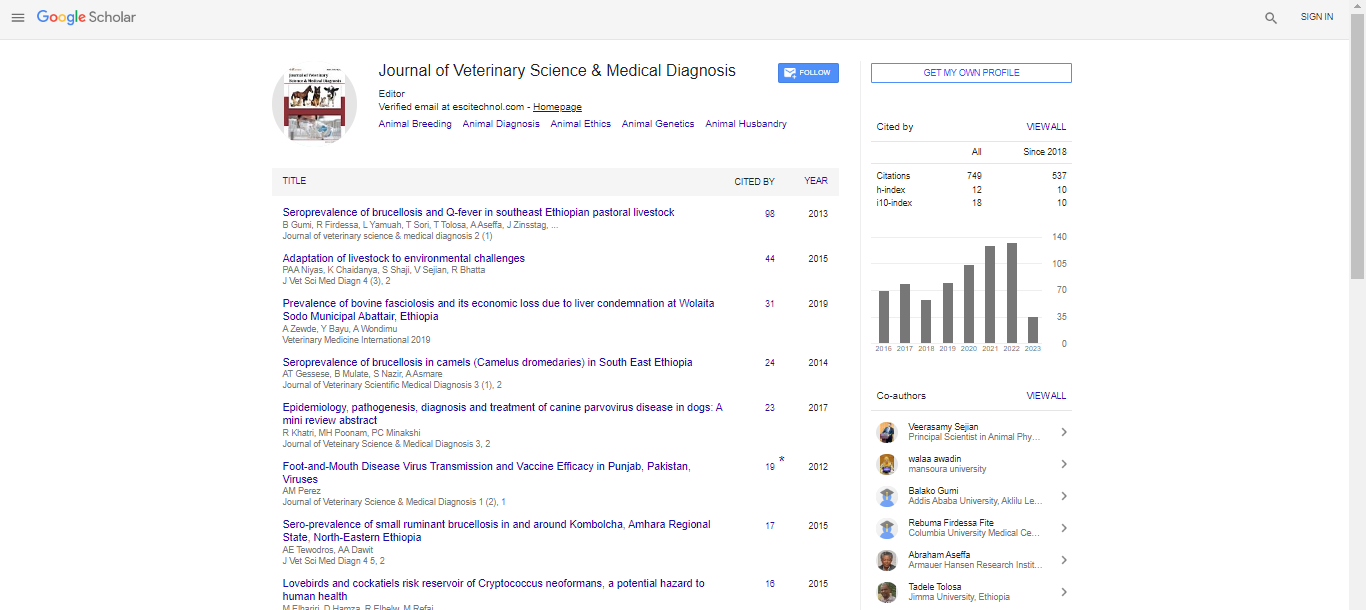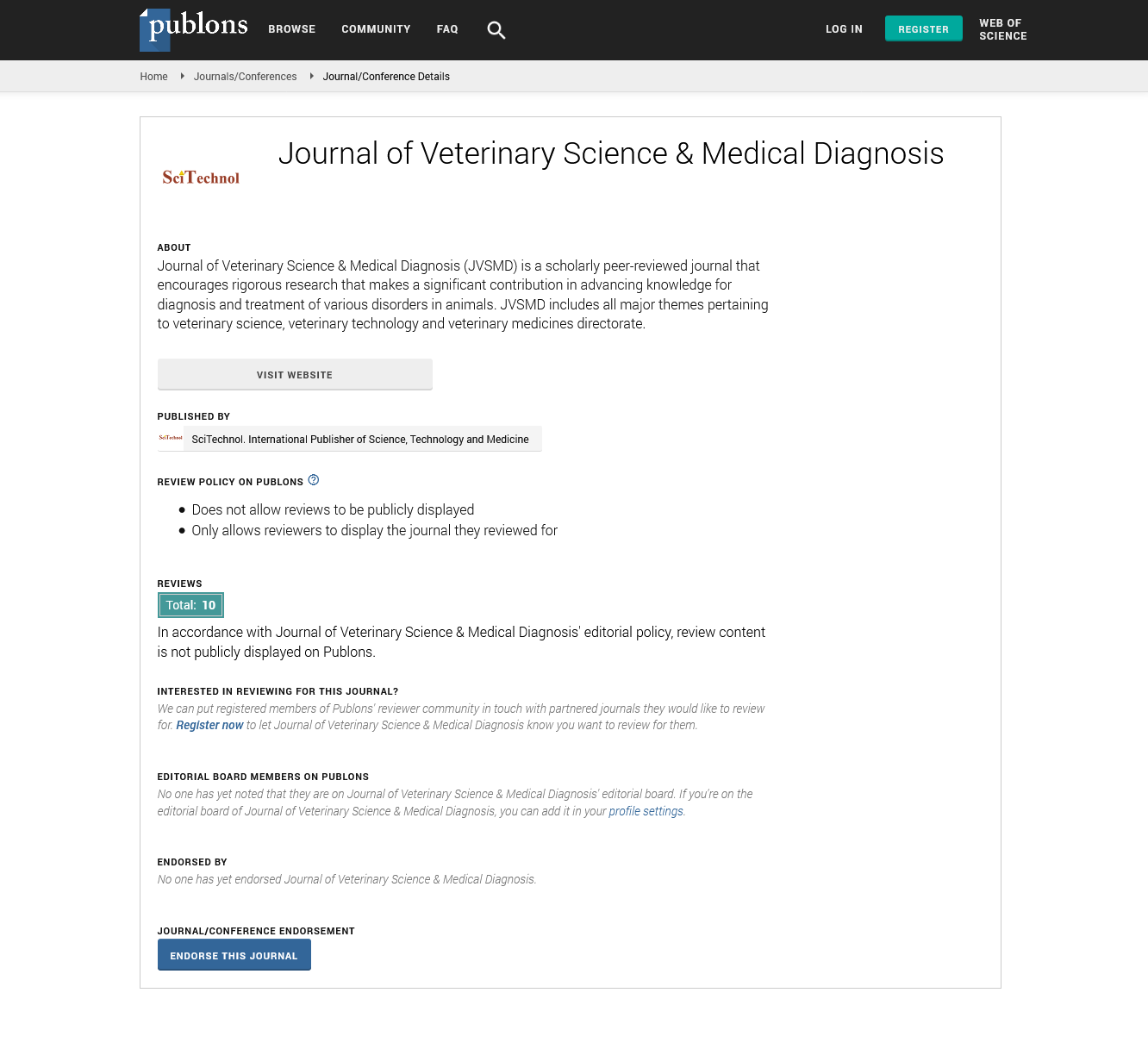Research Article, J Vet Sci Med Diagn Vol: 2 Issue: 3
Evaluation of Metabolisable Energy Indices Following Experimental Salinomycin Toxicosis in Sheep
| Hamid Rajaian1, Saeed Nazifi2*, Safoora Hashemi1, Ali Hajimohammadi2, Elham Mohsenifard2 and Maryam Ansari-Lari3 | |
| 1Department of Basic Sciences, School of Veterinary Medicine, Shiraz University, Shiraz, Iran | |
| 2Department of Clinical Studies, School of Veterinary Medicine, Shiraz University, Shiraz, Iran | |
| 3Department of Food Hygiene and Public Health, School of Veterinary Medicine, Shiraz University, Shiraz, Iran | |
| Corresponding author : Dr. S Nazifi Professor of Veterinary Clinical Pathology, Department of Clinical Studies, School of Veterinary Medicine, Shiraz University, Shiraz, P.O. Box: 1731-71345, Iran Tel: +98-711-2286940; Fax: +98-711-2286950 E-mail: nazifi@shirazu.ac.ir |
|
| Received: June 23, 2013 Accepted: September 24, 2013 Published: September 27, 2013 | |
| Citation: Rajaian H, Nazifi S, Hashemi S, Hajimohammadi A, Mohsenifard E, et al. (2013) Evaluation of Metabolisable Energy Indices Following Experimental Salinomycin Toxicosis in Sheep. J Vet Sci Med Diagn 2:3. doi:10.4172/2325-9590.1000118 |
Abstract
Evaluation of Metabolisable Energy Indices Following Experimental Salinomycin Toxicosis in Sheep
Salinomycin is an ionophore with antimicrobial properties. It is a dietary additive used as a growth promoter for ruminants and as a coccidiostat in chickens. However, overdosage or misuse situations can lead to a series of toxic syndromes. There are some reports with respect to the poisoning of animals with this agent used in high concentration in feed by mistake. This experiment was conducted to investigate the effect of salinomycin on variables related to energy metabolism such as glucose, β-hydroxybutyrate (BHB), non-esteritified fatty acid (NEFA), lactate, lipids (cholesterol and triglyceride) and lipoproteins (HDL, LDL and VLDL) in sheep.
 Spanish
Spanish  Chinese
Chinese  Russian
Russian  German
German  French
French  Japanese
Japanese  Portuguese
Portuguese  Hindi
Hindi 
